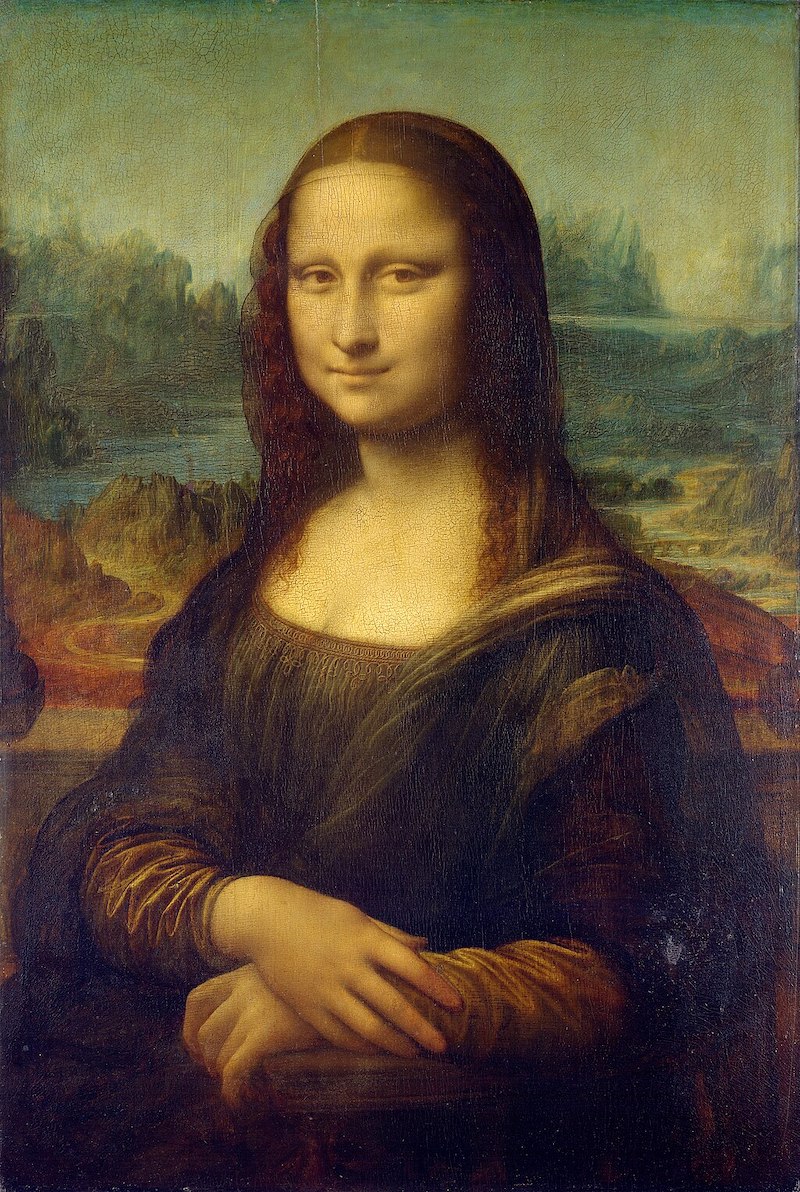
Mona Lisa, Leonardo da Vinci, ca. 1503-1506. Oil on poplar panel, 30 x 21 in. (Photo: Galerie de tableaux en très haute définition via Wikimedia Commons, Public domain)
There are few artworks that have risen to the same level of fame and recognition as Leonardo da Vinci’s Mona Lisa (ca. 1503-1506). More than 10 million people view the Mona Lisa every year at the Louvre, making it the most visited painting in the world. Less known is that the beloved painting has also been subject to one of the most publicized art thefts in history.
The Mona Lisa has been on display in the Louvre since 1797, but on August 21, 1911, it was stolen from the museum and went missing for nearly three years. At first, Louvre staff were unaware of the theft. An empty space on the wall wasn’t unusual, as artworks were often dismounted and taken to be photographed or cleaned. Two days after the heist, artist Louis Béroud visited the museum and asked a guard about the missing painting. When the guard couldn’t locate it, the police were finally called.
A frantic search and media circus ensued, adding to the painting’s allure and popularity with the public. For an entire week, the Louvre was closed and underwent a meticulous investigation, during which detectives dusted for fingerprints, questioned witnesses, and hunted for any possible evidence. Police even suspected and subsequently arrested the high-profile French poet Guillaume Apollinaire, who implicated his friend Pablo Picasso when interrogated. Both art legends were later acquitted due to a lack of evidence.
In reality, the painting was still in Paris, stashed for two years in the apartment of its thief—Vincenzo Peruggia. Peruggia worked as a handyman for the Louvre and even assisted in the construction of Mona Lisa’s protective glass case. He eventually stole the painting during regular museum hours and hid with it inside a broom closet.
Once the museum had closed, he walked out with one of the world’s most valuable paintings slipped under his coat. Though he was questioned twice by the authorities, who interviewed all permanent and contract workers for the Louvre, Peruggia was never a real suspect in the case and seemed to have gotten away with the heist.
By December 1913, Peruggia grew impatient. As an Italian immigrant and patriot, he firmly believed that the Mona Lisa should be returned to Italy and offered to sell the painting to an Italian gallerist for 500,000 lira. The gallerist asked Giovanni Poggi, director of Florence’s Uffizi Galleries, to authenticate the artwork. Once Poggi confirmed that it was, indeed, the Mona Lisa, the men told Peruggia that they would store it for “safekeeping” and then promptly called the authorities, who arrested Peruggia.
The artwork was then exhibited in the Uffizi Galleries for two weeks before making its way back to Paris. On January 4, 1914, the Mona Lisa was at last recovered by the Louvre. Peruggia served six months in prison for the crime and was hailed as a national hero in Italy.
Though Peruggia himself has largely been forgotten, his heist is undoubtedly etched into art history. The theft enhanced the Mona Lisa’s international appeal, one that remains 500 years after it was originally painted by a Renaissance master.
The Mona Lisa was subject to one of the world’s most famous art thefts in 1911.
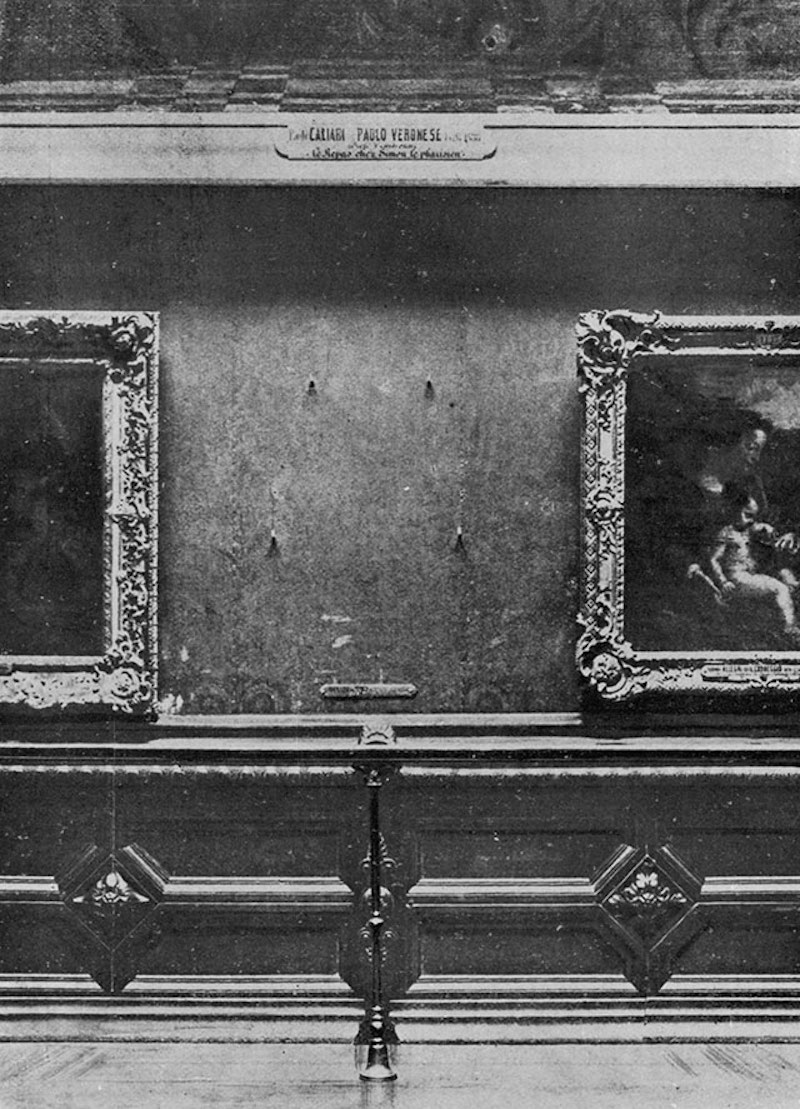
The Mona Lisa’s vacant wall space in the Louvre, after having been stolen in 1911. (Photo: Century Magazine via Wikimedia Commons, Public domain)
At first, Louvre staff thought that the painting was being photographed or cleaned, but eventually called the police.
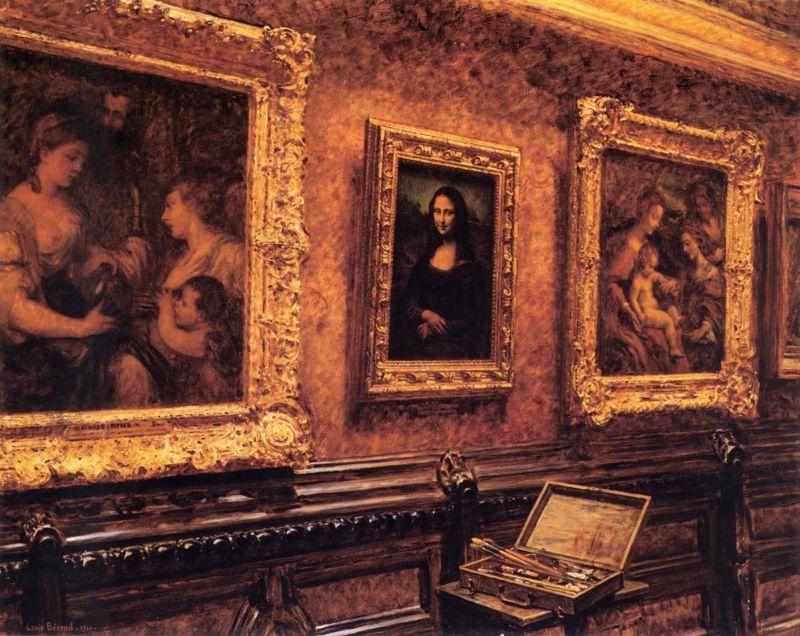
Louis Béroud’s 1911 painting depicting the Mona Lisa displayed in the Louvre before the theft. Béroud was the visiting artist who reported the theft to Louvre guards two days later. (Photo: Louis Béroud via Wikimedia Commons, Public domain)
Thief Vincenzo Peruggia was motivated by national pride and hoped to return the painting to an Italian museum.
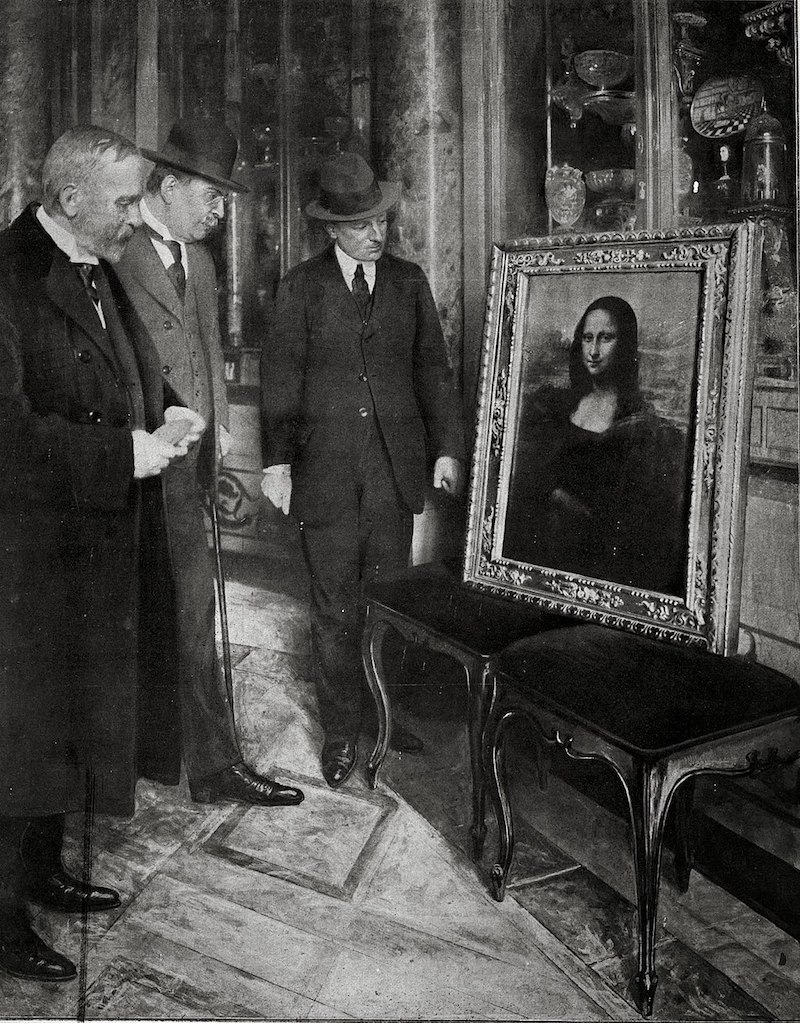
The Mona Lisa on display in Uffizi Gallery in Florence. (Photo: Unknown Author – The Telegraph via Wikimedia Commons, Public domain)
Peruggia was eventually caught, and the Mona Lisa was restored by the Louvre in January 1914.
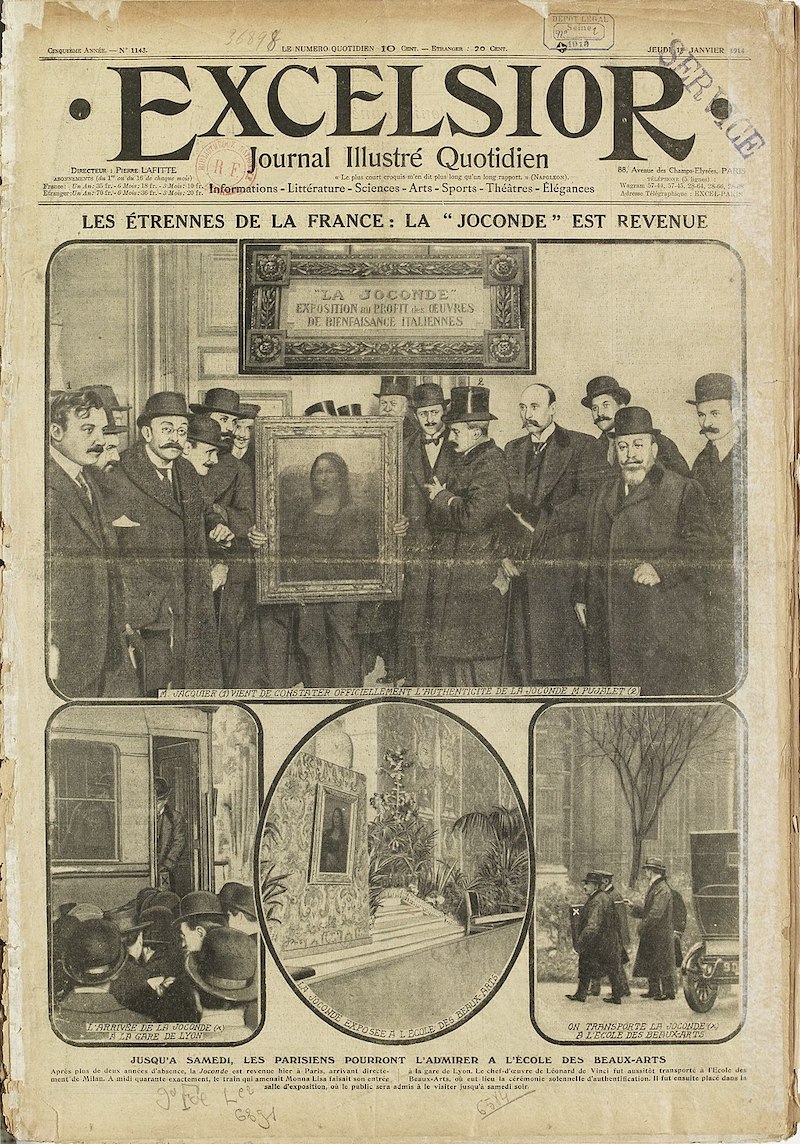
La Joconde est Revenue (“The Mona Lisa has returned”), Excelsior: Journal Illustré Quotidien, January 1914. (Photo: Gallica Digital Library via Wikimedia Commons, Public domain)
Related Articles:
Fragment Stolen by Famous Art Thief Over 40 Years Ago Is Finally Returned to Renaissance Tapestry
Painting Stolen Over 50 Years Ago by Mobsters Is Finally Recovered
Stolen Van Gogh Painting Is Returned to Museums in the Netherlands After Three Years
